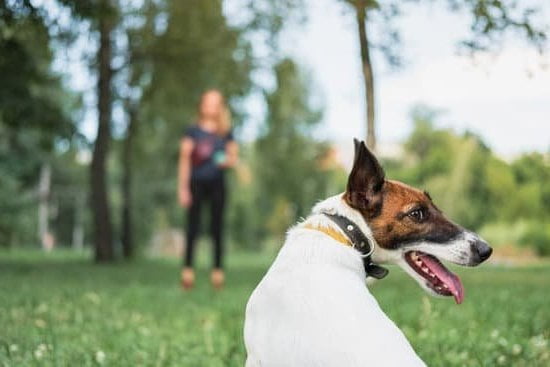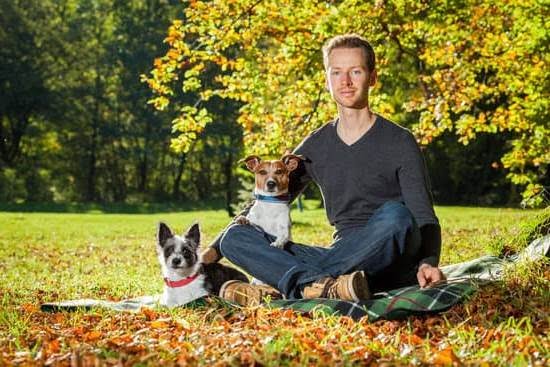Dogs chasing after cars is a behavior that can be not only dangerous but also unsettling for dog owners. Understanding why dogs engage in this behavior is crucial to effectively addressing and preventing it. One of the key steps in resolving this issue is learning how to train a dog to stop chasing cars. A combination of training, positive reinforcement, and management strategies can help curb this potentially harmful habit.
Dogs have natural instincts that drive them to chase moving objects, including cars. These instincts can vary depending on the breed and individual personality of the dog. For some dogs, the sight and sound of a speeding vehicle triggers their prey drive or territorial instincts, leading them to give chase. Recognizing these underlying motivations is essential to developing an effective training plan.
The risks associated with dogs chasing cars are significant, both for the safety of the dog and for drivers on the road. Dogs can easily be injured or killed if they come into contact with a moving vehicle, while drivers may swerve or brake suddenly to avoid hitting a dog, potentially causing accidents.
By establishing a strong foundation through training, obedience exercises, and positive reinforcement techniques, you can help your dog overcome their urge to chase cars and keep them safe from harm.
The Dangers of Dogs Chasing Cars
Dogs chasing cars pose serious risks not only to themselves but also to drivers on the road. The instinct to chase moving objects is deeply ingrained in many dogs, making it a challenging behavior to address.
When a dog chases a car, it exposes itself to various dangers such as getting hit by the vehicle, getting lost, or causing accidents. In addition, drivers may panic or swerve to avoid hitting the dog, potentially causing harm to themselves and others on the road.
Physical Dangers
One of the most immediate risks of dogs chasing cars is physical injury. A dog running after a moving vehicle can easily get hit and suffer severe injuries or even death. Even if they manage to avoid being hit directly, they could still end up with cuts, bruises, or broken bones from colliding with obstacles in their path. These injuries can be not only painful but also expensive to treat, putting a significant financial burden on pet owners.
Legal Consequences
In addition to physical harm, there are legal consequences for both dog owners and drivers when an accident occurs due to a dog chasing cars. If a driver hits and injures a dog while trying to avoid a collision, they may be held liable for damages.
On the other hand, if a dog causes an accident by darting onto the road unexpectedly, their owner may be responsible for any resulting damages or injuries. Understanding these potential legal ramifications is crucial for both pet owners and drivers in preventing such incidents from happening.
Establishing a Strong Foundation
Creating a Bond Through Training
Training your dog is an essential part of building a strong foundation and positive relationship. By teaching basic commands like sit, stay, and come, you are establishing clear communication and promoting obedience. Consistent training sessions not only help in controlling your dog’s behavior but also strengthen the bond between you and your furry friend. Reward-based training methods can be particularly effective in shaping desirable behavior and preventing unwanted actions like chasing cars.
Engaging in Regular Exercise
A well-exercised dog is often a calmer and more contented companion. Regular physical activity not only helps to release excess energy but also provides mental stimulation which can reduce the likelihood of engaging in destructive behaviors such as chasing cars. Taking your dog for daily walks, providing interactive toys, or engaging in playtime can all contribute to keeping your pup physically fit and mentally stimulated.
Socialization for Balanced Behavior
Socializing your dog with other animals, people, and environments from a young age is crucial for developing well-rounded behavior. A properly socialized dog is more confident, less fearful, and better able to handle different situations without resorting to negative behaviors like chasing cars.
By introducing your dog to new experiences gradually and positively reinforcing good interactions, you can help them feel comfortable and secure in various environments. Socialization efforts can significantly impact how your dog responds to stimuli like moving vehicles on walks or when outdoors.
Basic Obedience Training
When training your dog to stop chasing cars, the “come” command is especially important. Teaching your dog to come when called can be lifesaving in situations where they may be tempted to run after a passing vehicle. Practice this command in a safe and controlled environment, gradually increasing distractions to ensure that your dog responds reliably even when tempted by moving cars.
In addition to the “come” command, reinforcing the behaviors of sitting and staying can also contribute to preventing your dog from chasing cars. By teaching your dog to sit and stay on command, you can effectively manage their impulse control and discourage them from engaging in potentially dangerous behaviors like running after vehicles. Consistent training, patience, and positive reinforcement are key elements in successfully teaching essential obedience commands for car-chasing prevention.
| Obedience Commands | Role in Car-Chasing Prevention |
|---|---|
| Come | Teaches the dog to respond reliably when called, preventing them from running after cars. |
| Sit | Promotes impulse control and helps redirect the focus away from chasing vehicles. |
| Stay | Maintains control over the dog’s movements and prevents them from pursuing cars. |
Counterconditioning and Desensitization
One method of counterconditioning involves exposing your dog to cars from a safe distance where they can still remain calm and relaxed. You can start by having a friend drive slowly past while you reward your dog for calm behavior. Gradually decrease the distance between your dog and the moving vehicle as they become more comfortable. It is crucial to always keep interactions positive and ensure that your dog feels safe throughout the process.
Desensitization works in conjunction with counterconditioning by systematically exposing your dog to stimuli that trigger their impulse to chase cars in a controlled manner. This gradual exposure helps them build tolerance and reduce their reactivity over time. By incorporating these techniques into your training regimen, you can help your dog develop healthier responses to cars and ultimately prevent them from engaging in dangerous behaviors on the road.
| Counterconditioning and Desensitization Techniques | Changing Your Dog’s Response to Cars |
|---|---|
| Exposing your dog at a safe distance from moving vehicles | Promoting positive associations with cars |
| Rewarding calm behavior during car exposure | Gradually reducing sensitivity towards cars |
| Systematically desensitizing your dog through controlled exposure | Building tolerance and reducing reactivity over time |
Positive Reinforcement
Training a dog to stop chasing cars can be a challenging task, but with consistency and positive reinforcement, it is possible to change your furry friend’s behavior. One effective approach is to reward good behavior and redirect their attention away from cars towards more appropriate activities. Here are some helpful tips on how to utilize positive reinforcement in training your dog:
- Use high-value treats or toys as rewards when your dog demonstrates the desired behavior of ignoring cars. This will help reinforce the idea that focusing on you or engaging in other activities is more rewarding than chasing vehicles.
- Practice obedience commands such as “look at me” or “leave it” during walks or when cars pass by. Reward your dog for obeying these commands and diverting their attention away from the vehicles.
- Engage in interactive games or exercises that stimulate your dog mentally and physically, such as fetch or agility training. This can help redirect their energy towards constructive activities and reduce the urge to chase cars.
By consistently praising and rewarding your dog for ignoring cars and exhibiting appropriate behavior, you can gradually shift their focus away from chasing vehicles. Remember to be patient and persistent in your training efforts, as changing ingrained habits takes time and dedication. If you encounter challenges along the way, don’t hesitate to seek advice from a professional trainer or behaviorist for additional support.
Offering positive reinforcement not only helps train your dog to stop chasing cars but also strengthens the bond between you and your furry companion. By creating a positive association with desirable behaviors and providing rewards, you can effectively encourage good habits and discourage unwanted actions like chasing after vehicles. With patience, consistency, and plenty of encouragement, you can help your dog learn to make better choices when faced with the temptation to chase cars.
In addition to using positive reinforcement techniques, it’s essential to create a safe environment for your dog to minimize the risk of car-related incidents. Implement management strategies such as keeping your dog on a leash during walks near traffic areas, securing them in a fenced-in yard, or using barriers to prevent access to roads.
By combining proactive measures with training methods focused on positive reinforcement, you can set your dog up for success in learning how to resist the urge to chase cars effectively.
Management and Supervision
It is essential for dog owners to understand the risks and dangers associated with their pets chasing cars. Not only can this behavior be harmful to the dog itself, but it also poses a threat to drivers and pedestrians. By implementing proper training and management techniques, it is possible to prevent your dog from engaging in this risky behavior.
One effective way to prevent your dog from chasing cars is by using a leash during walks or outdoor activities. A sturdy leash will provide you with control over your dog’s movements, allowing you to redirect their attention away from passing vehicles. Additionally, using a long line or retractable leash can give your pet more freedom while still ensuring their safety.
Another strategy to consider is creating a fenced-in yard or secure outdoor environment for your dog. A fenced area provides a safe space for your pet to play and exercise without the risk of running after cars on the street. This containment measure can help reduce the likelihood of car-chasing behavior and offer peace of mind for both you and your furry companion.
To further reinforce good behavior and discourage car chasing, consistently practice obedience commands like sit, stay, and come during training sessions with your dog. Positive reinforcement techniques, such as rewarding your pet with treats or praise when they obey commands or ignore cars, can help solidify desired behaviors. Consistency, patience, and positive reinforcement are key elements in training a dog to stop chasing cars effectively.
Seek Professional Help if Needed
In conclusion, training a dog to stop chasing cars requires patience, consistency, and a deep understanding of your furry companion’s behavior. It is essential to recognize that the urge to chase cars may stem from natural instincts or past experiences, making it crucial to address this behavior in a positive and constructive manner.
By taking the time to establish a strong foundation of trust and communication with your dog through training, exercise, and socialization, you can set the stage for successful intervention.
Basic obedience training plays a significant role in teaching your dog essential commands like sit, stay, and come, which can enhance control and facilitate effective communication. Moreover, implementing counterconditioning and desensitization techniques can help change your dog’s response to cars by gradually exposing them to controlled car-related stimuli. Positive reinforcement is key in shaping desirable behaviors and redirecting your dog’s attention away from chasing cars towards more appropriate activities.
While some cases may require professional intervention, seeking guidance from a qualified dog trainer or behaviorist can provide additional support and expertise in addressing your dog’s car-chasing behavior effectively. By working together with these experts, you can develop a tailored training plan that meets your dog’s specific needs while ensuring their safety and well-being.
Remember that with dedication, consistency, and the right approach, you can help your furry friend learn how to resist the urge to chase cars and enjoy a happy and fulfilling life by your side.
Frequently Asked Questions
How Can I Get My Dog to Stop Chasing Cars?
One way to get your dog to stop chasing cars is through consistent training and positive reinforcement. Teaching your dog to come when called and rewarding them with treats or praise can help redirect their behavior.
Will a Shock Collar Stop a Dog From Chasing Cars?
Using a shock collar may not be the most effective or humane way to stop a dog from chasing cars. While it may temporarily deter the behavior, it does not address the underlying reasons why the dog is chasing cars and can lead to anxiety or fear in the long run.
Why Does My Dog Like to Chase Cars?
Dogs often chase cars as a result of their natural prey drive or herding instincts. Some dogs may also chase cars due to boredom, lack of exercise, or seeking attention from their owners. Understanding the root cause can help in addressing this behavior effectively.

Welcome to the blog! I am a professional dog trainer and have been working with dogs for many years. In this blog, I will be discussing various topics related to dog training, including tips, tricks, and advice. I hope you find this information helpful and informative. Thanks for reading!





